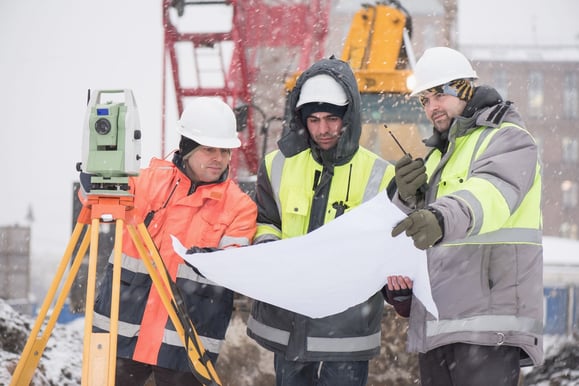Ultimate Winter Worker Safety List

Frigid winter temperatures are not to be taken lightly – especially when you’re working in these cold climates. Outdoor or road workers are often susceptible to the harmful hazards of winter, including icy roads, frost bite and slips/falls.
According to the United States Bureau of Labor Statistics, 42,280 work injuries involved ice, sleet, or snow in 2014. These injuries were the result of falls, slips, transportation incidents or overexertion. And it’s no surprise that workers on the east coast, including those in New York and Pennsylvania, suffered the most injuries occurring from a same-level fall.
To mitigate the risk of injury during these cold, snowy months, we’ve compiled a check list of daily workplace safety tips. These tips range from recommended safety policies to standard car check-ups and can help both you and your workforce stay winter ready.
Road Workers
- Make sure your vehicle, whether your own or supplied by your employer, has had a recent tune up. Check to ensure the brakes, fluids and lights are working properly before each departure. Always carry an emergency car kit and consider filling it with items like blankets, snacks, flashlights and water.
- Plan your route and stick to the basics. Consider using a GPS service like Waze, to identify route options before you begin your journey. This will help you plan a course of action and identify any potential hazards along the way. Also, leave the cruise-control for the summer – slowing down just comes with the territory of icy conditions.
- When in doubt, stay off the roads. No matter what your job requires, heavy snowfall or icy road conditions could result in deadly collisions. No job demands are worth risking your life.
Construction/Utility Workers
- If working with or close to downed or damaged power lines, remember downed wires can energize other objects, like fences, bushes and trees. Even if the wires aren’t sparking, power lines can still be fully active.
- Dress the part. When temps get low, it’s best to bundle up from head to toe. While multiple layers and proper footwear are recommended, remember that baggy or loose fighting clothing have the potential to cause injuries, as well.
- Make yourself visible. Many work injuries and fatalities have been caused by vehicles or mobile equipment. If your work zone is near traffic areas, be sure to use cones, barrels and fluorescent garments to deter accidents.
Outdoor Workers
- If you must be outside, be sure to limit your exposure. Frostbite can set in when the temperature and wind chill reach a certain low and are most susceptible to fingers, toes, ear lobes and tip of the nose.
- Take frequent breaks in warm areas. It may cross your mind to power through your daily outdoor duties to get them over and done with, but this may be harmful to your health. Instead, take shorter breaks more often in a heated structure to release the chill and warm up.
- Be aware of your surroundings. Has a heavy ice set in overnight? Look out for downed trees or branches on the brink of busting. Staying alert and continuing to evaluate the jobsite throughout the day will help protect against potential hazards.
While winter technically only lasts three short months, its effects can be felt much longer. Consider these winter worker safety tips to help decrease your risk of injury during the season.
Other Posts You Might Be Interested In
Subscribe to email updates
Stay up-to-date on what's happening at this blog and get additional content about the benefits of subscribing.


